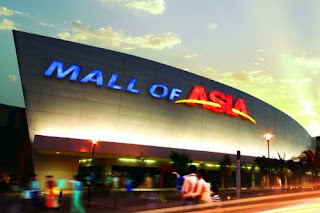ILAGAN, ISABELA
The conversion of Ilagan, Isabela on February 2, 1998 (RA 8474) for cityhood would have made it the largest city in the province. But the plebiscite held on March 14, 1999 turned down its bid for cityhood under the Administration of former Mayor Mercedes P. Uy. The majority of the people voted no in that historic event. It has 72,365 voters according to the 2007 elections.
After 13 years, the municipal learders of Ilagan lead by Isabela first district Rep. Rodolfo Albano has renewed the bid for its citihood. Vice Gov. Rodito Albano said that the provincial government fully supports Ilagan’s renewed cityhood bid, considering that such goal is already long overdue. And former Department of Justice Secretary Silvestre Bello III expressed support to the renewed move of the local officials of Ilagan, Isabela, headed by Mayor Josemarie L. Diaz, for the town’s conversion to a city.
ILAGAN SANCTUARY
Major tourist spot in ilagan, Isabela, featuring caves, springs, cascading waters, falls, swimming pools, zoo, floral gardens and other amenities for relaxation and family activities. Visit the place and experience the ambiance of nature..
The Ilagan Sanctuary was located at Sta. Victoria, Ilagan, Isabela. This is 35km away from centro ilagan. If we are going there, don’t go there with tricycle only because it is rough road. If you hire a jeep from centro the minimum fare is 500. But if you have car, it’s good.
Pinzal Falls, Sta. Victoria, Ilagan, Isabela
The Santa Victoria Caves are more than 12 Philippine limestone caves ... part of the Fuyot Springs National Park (FSNP) in Ilagan, Isabela.
Sta. Victoria Caves (Ilagan, Isabela, Luzon)
It features naturally formed lattices and sparkling rock formations. Visitors are given lectures and allowed to plant their own seedlings,and those enrolled at the Environmental School nearby are given certificates. Within the area is the Pinzal Falls conducive for swimming and other recreational facilities like carabao-drawn carts and horseback riding. The park is 15 kilometers from Ilagan town proper.
How to get there:
Isabela is about 405 kilometers north of Metro Manila and can be reached by air-conditioned bus.
santa victoria cave is in this area. you can found many monkeys here and a pool infront of cave that the water is came from falls. the water is so clean and cold. the cotage is in the center of an small river.
Sta. Victoria Caves (Ilagan, Isabela, Luzon)
It features naturally formed lattices and sparkling rock formations. Visitors are given lectures and allowed to plant their own seedlings,and those enrolled at the Environmental School nearby are given certificates. Within the area is the Pinzal Falls conducive for swimming and other recreational facilities like carabao-drawn carts and horseback riding. The park is 15 kilometers from Ilagan town proper.
How to get there:
Isabela is about 405 kilometers north of Metro Manila and can be reached by air-conditioned bus.
santa victoria cave is in this area. you can found many monkeys here and a pool infront of cave that the water is came from falls. the water is so clean and cold. the cotage is in the center of an small river.
Santa Victoria Caves
The Santa Victoria Caves are more than 12 Philippine limestone caves that are found in the foothills of the Sierra Madre Mountain Range. The caves are known for their beautiful and unusual rock formations, their sparkling rocks, and their subterranean waterfalls. They are also of archaeological significance as they are believed to have been occupied by the nomadic Agta or Dumagat people in the past. The caves are located within the Isabela Sanctuary, which is part of the Fuyot Springs National Park (FSNP) in Ilagan, Isabela. This area is included in the Palanan Wilderness Area or Northern Sierra Madre National Park in the province of Isabela in Cagayan Valley.
Sta. Victoria Cave, ILagan, Isabela
Santa Victoria is a barangay of the philippine municipality Ilagan in the province Isabela in Cagayan Valley which is part of the Luzon group of islands. The municipality Ilagan with a population of about 131,243 and its 91 barangays belongs to the partly urban areas in the Philippines. Santa Victoria had 1,219 residents by the end of 2007.















